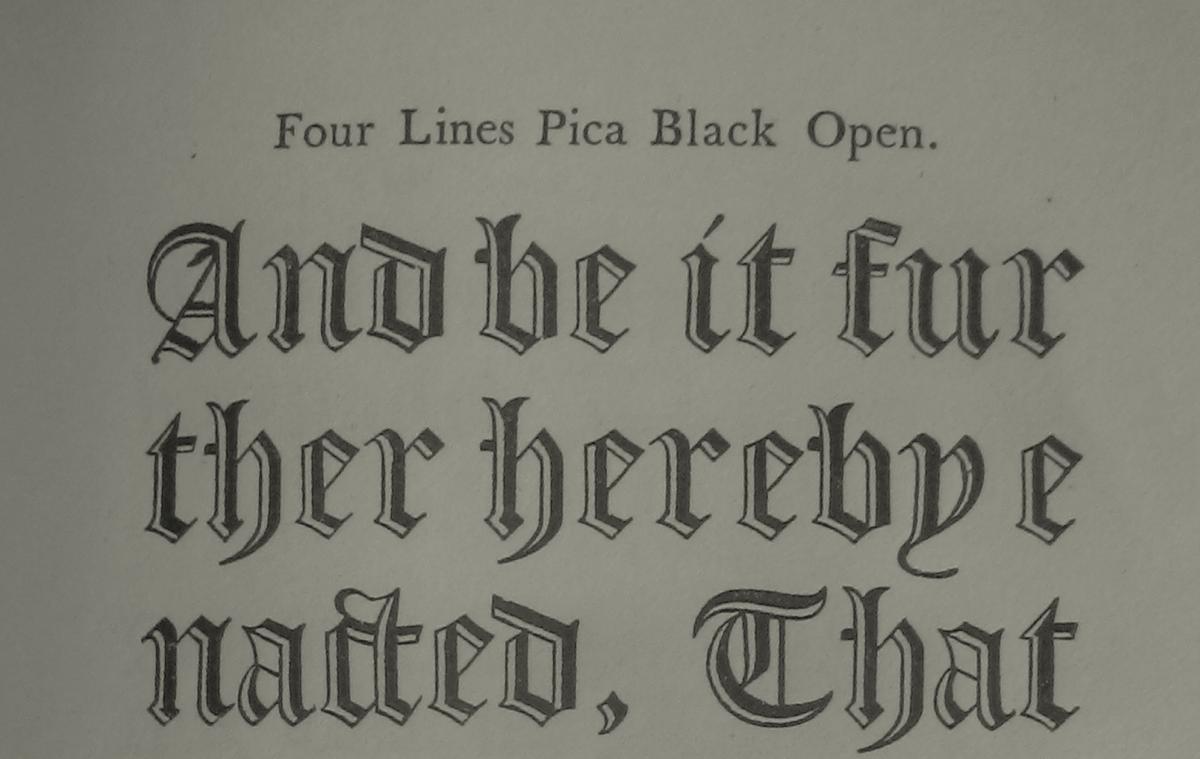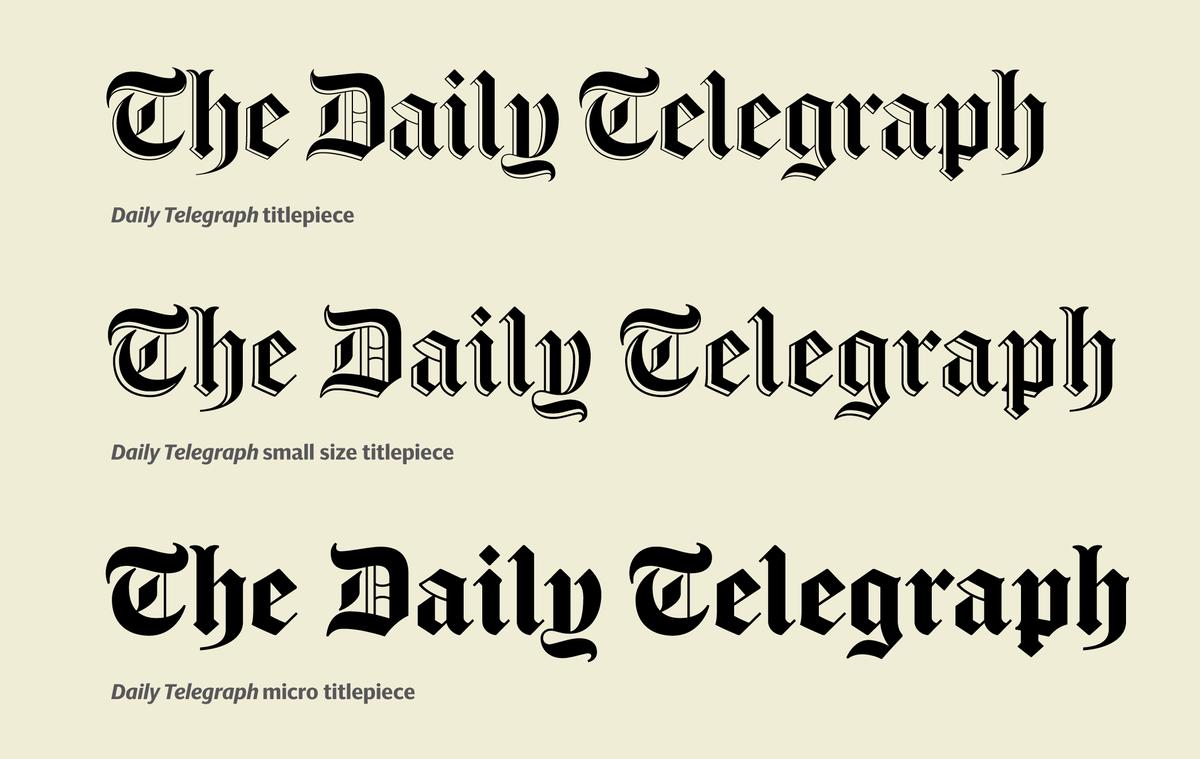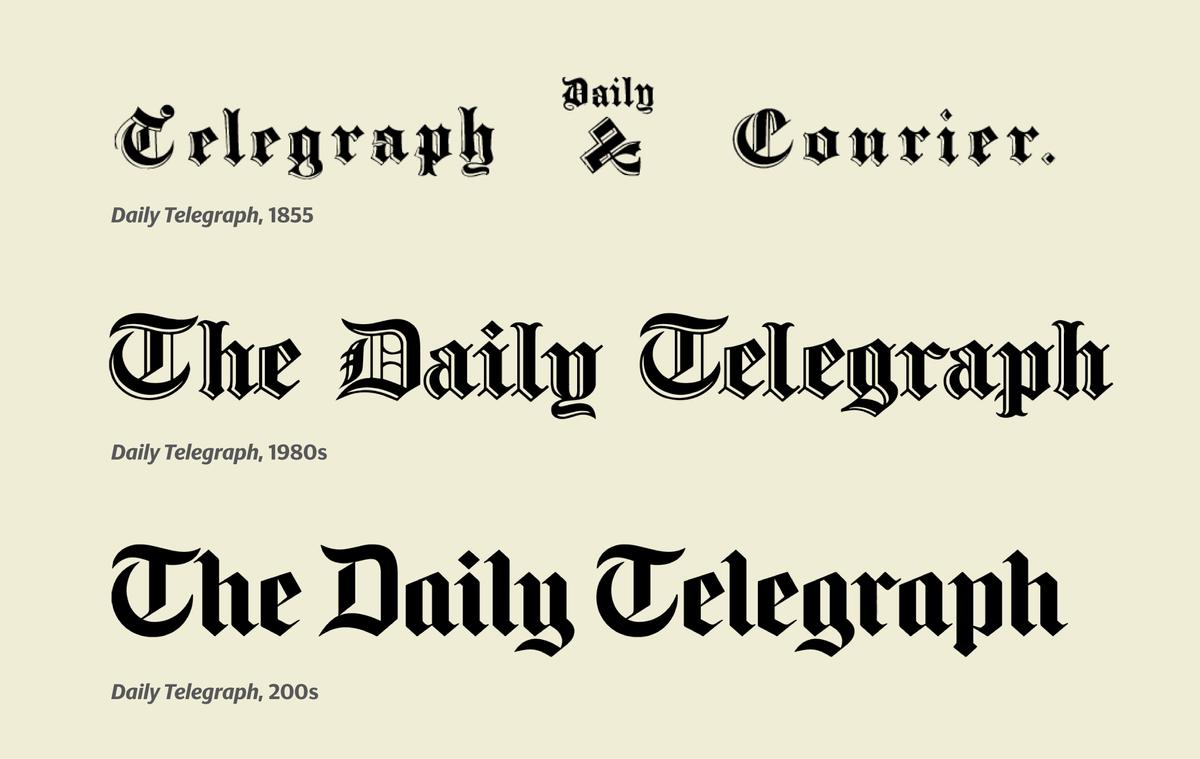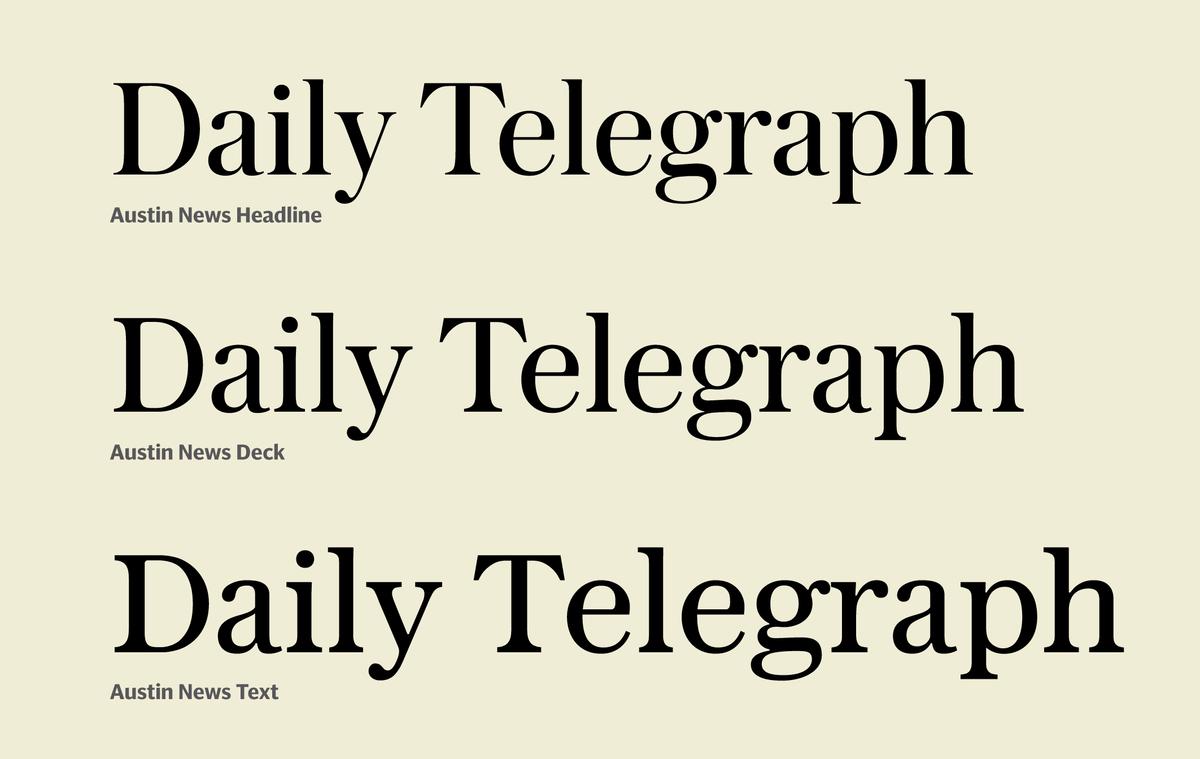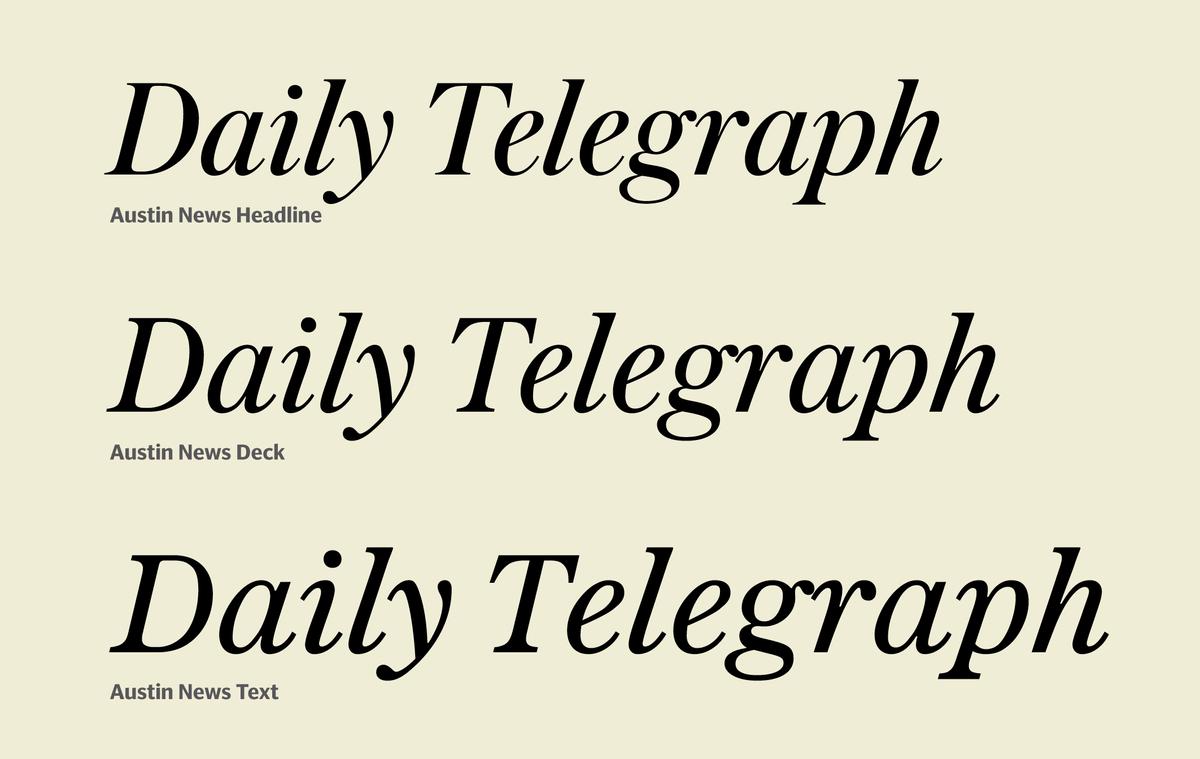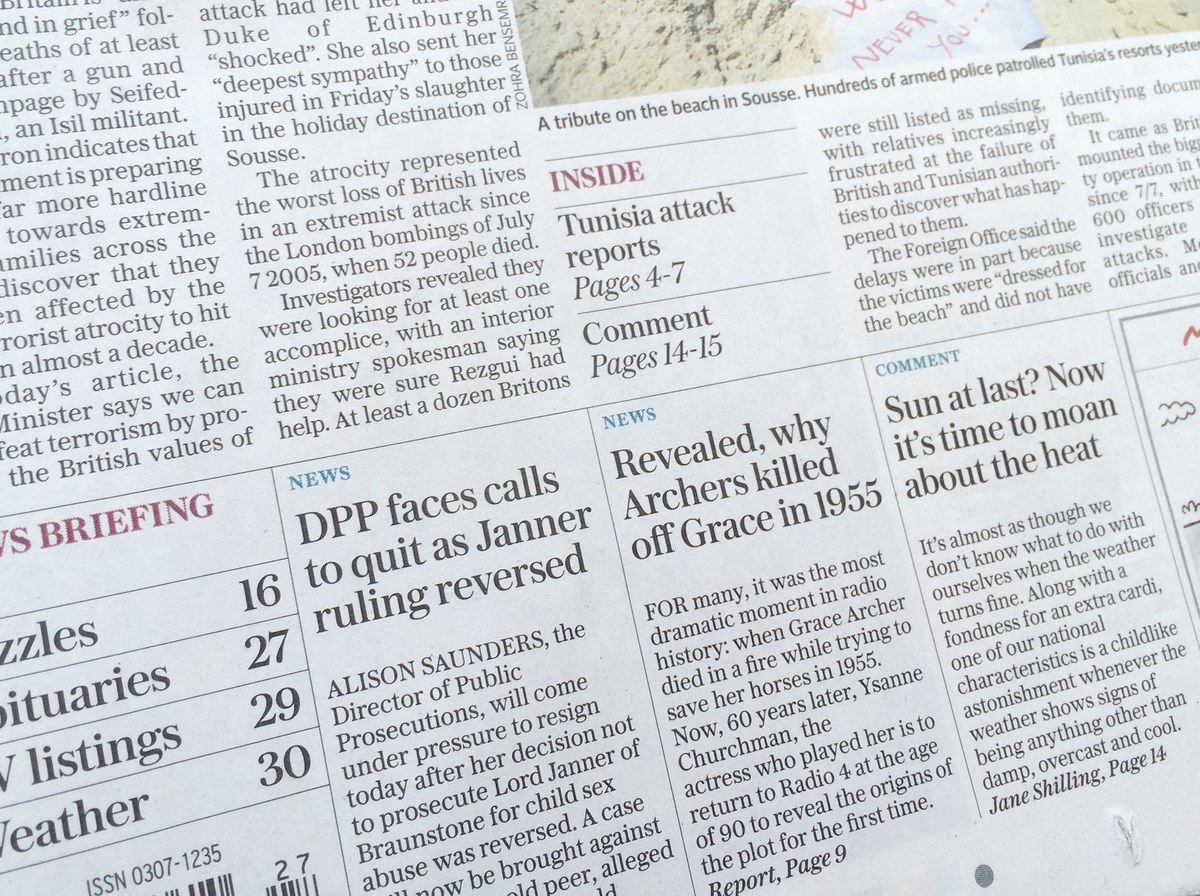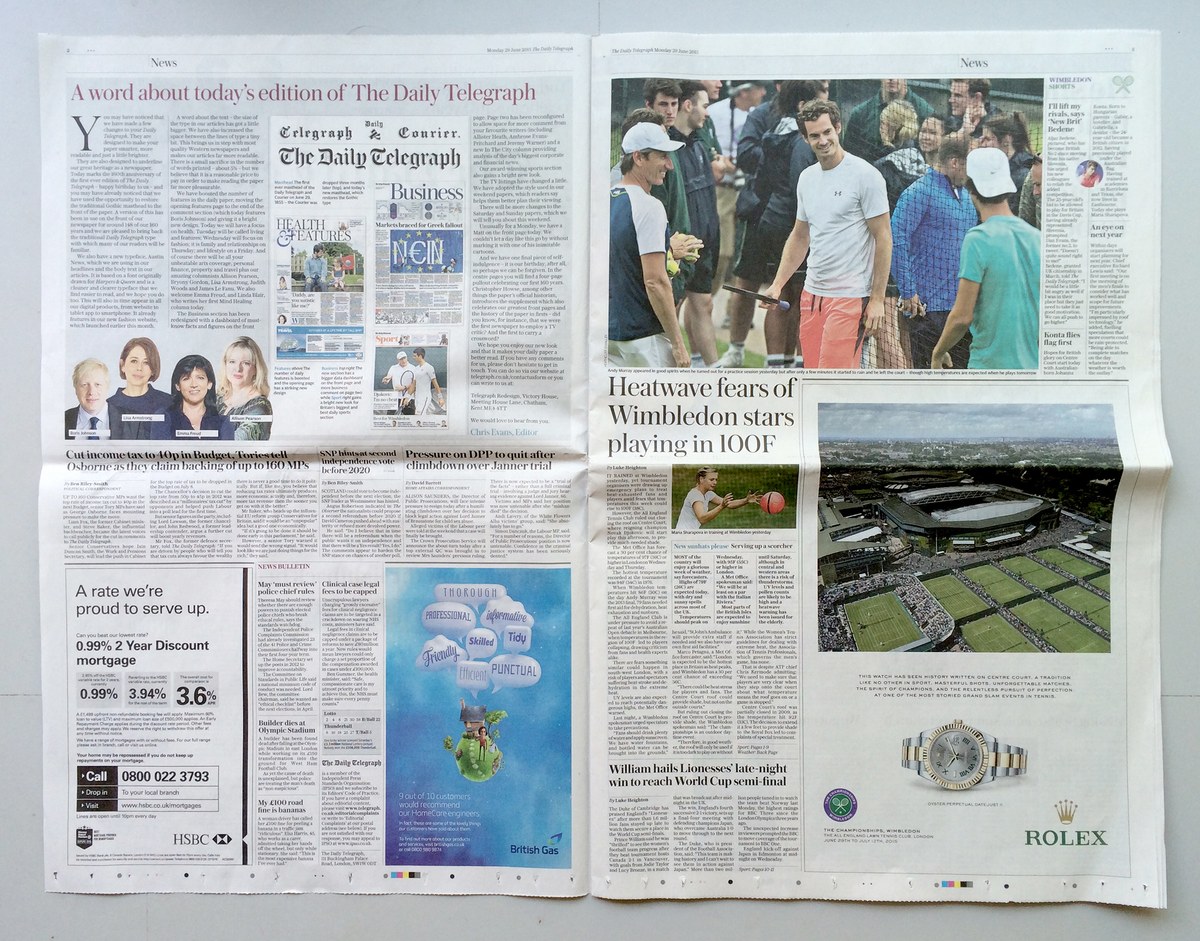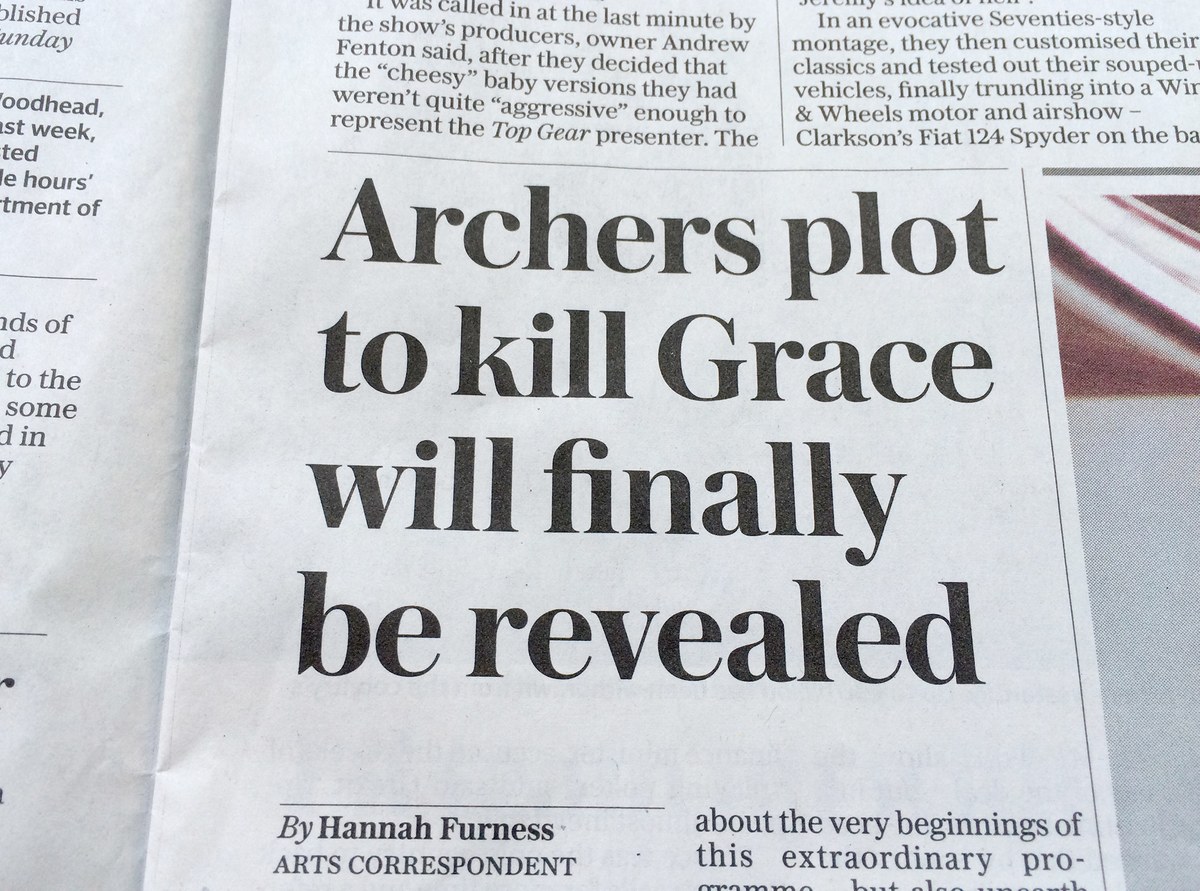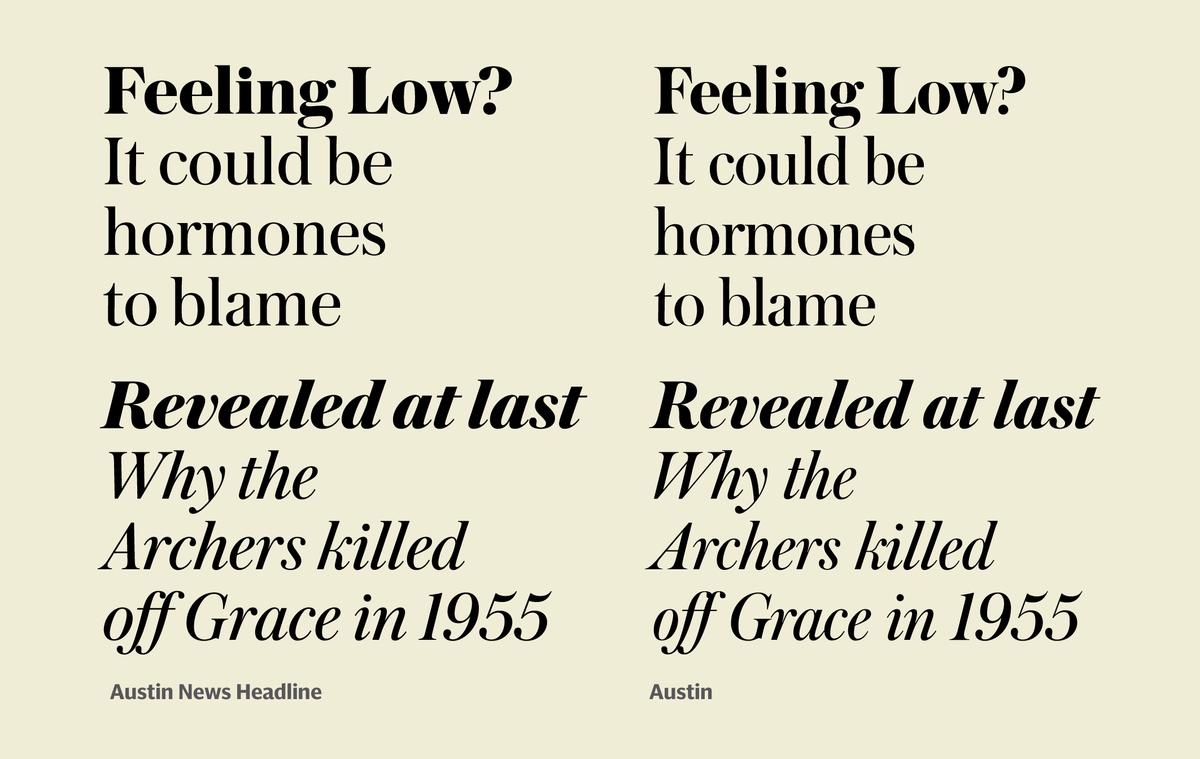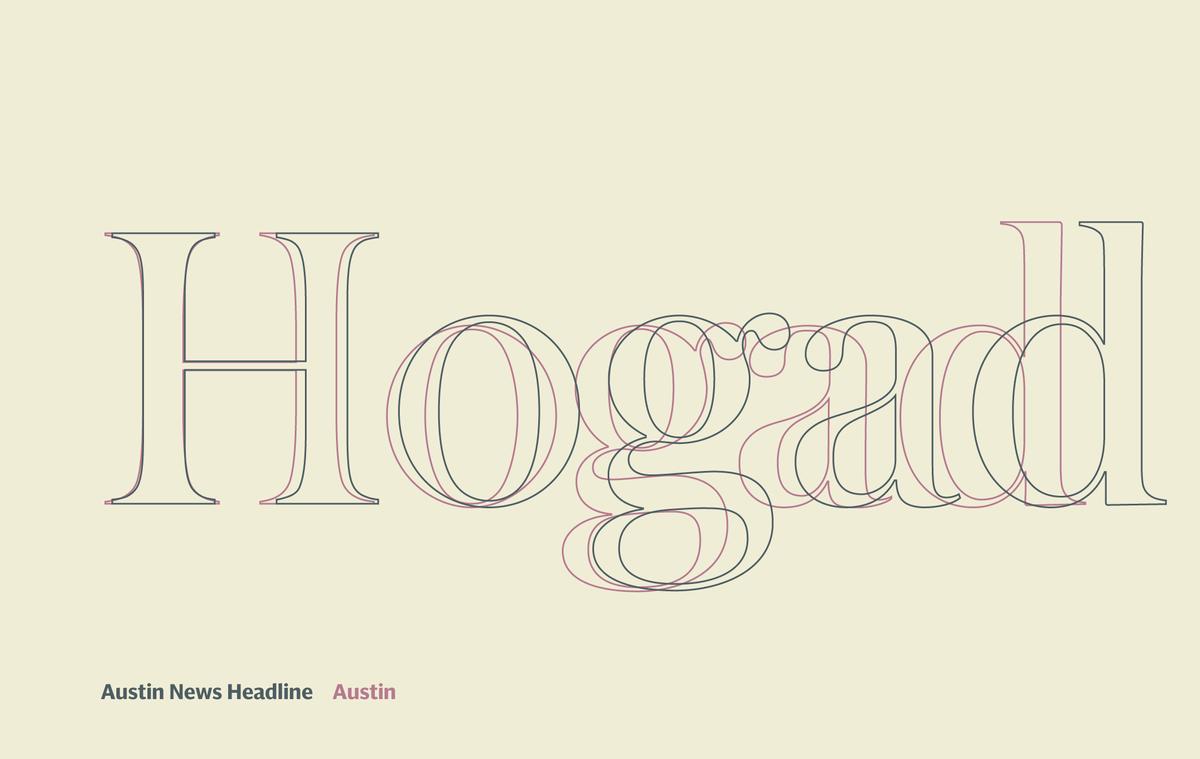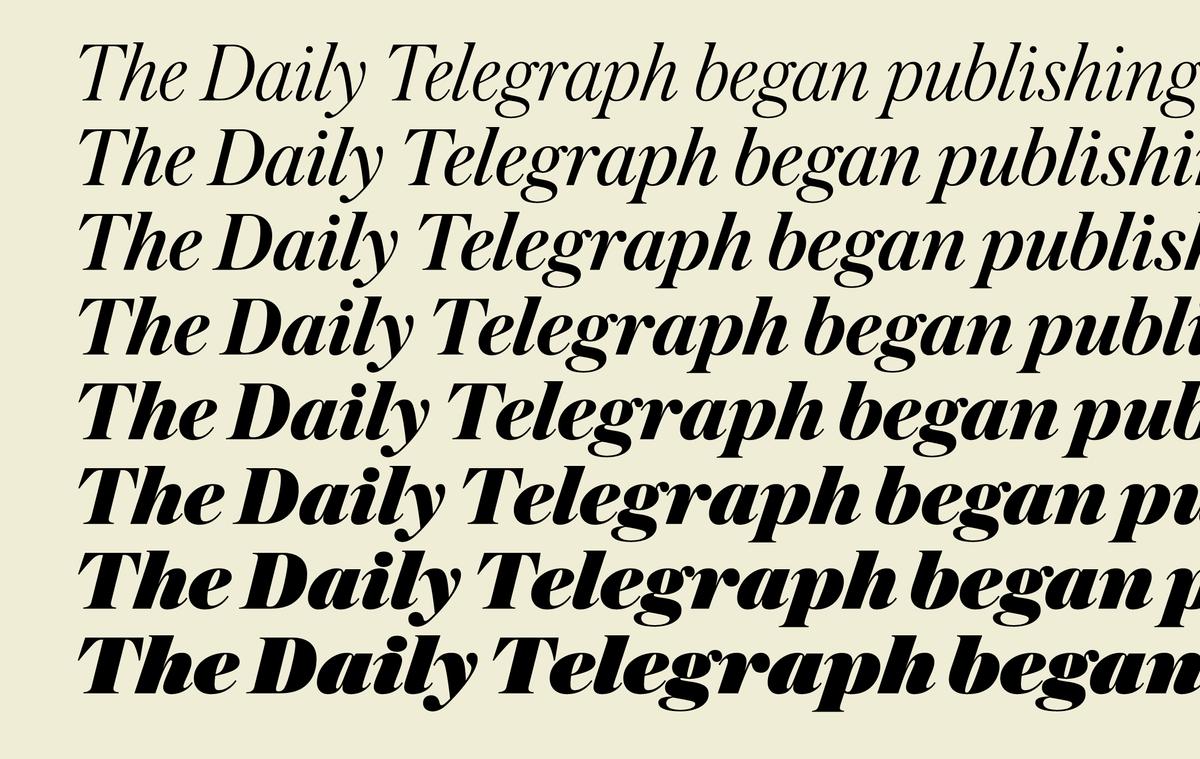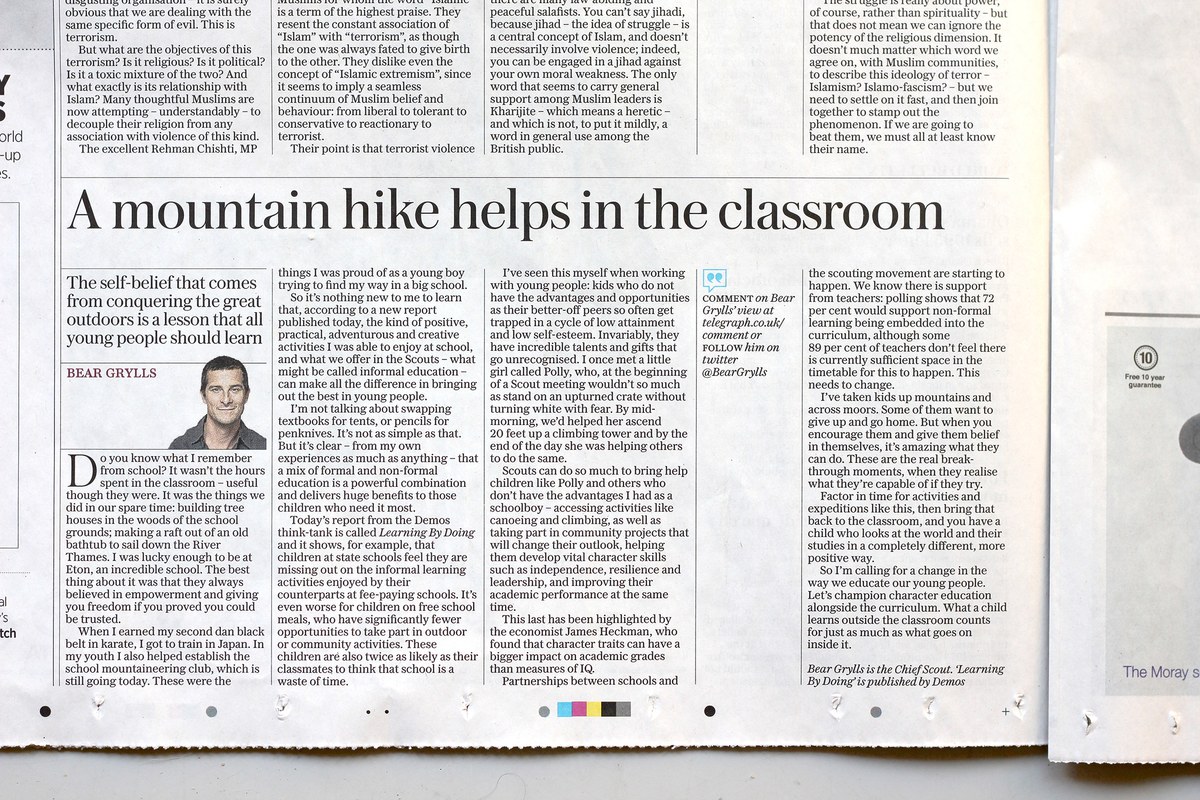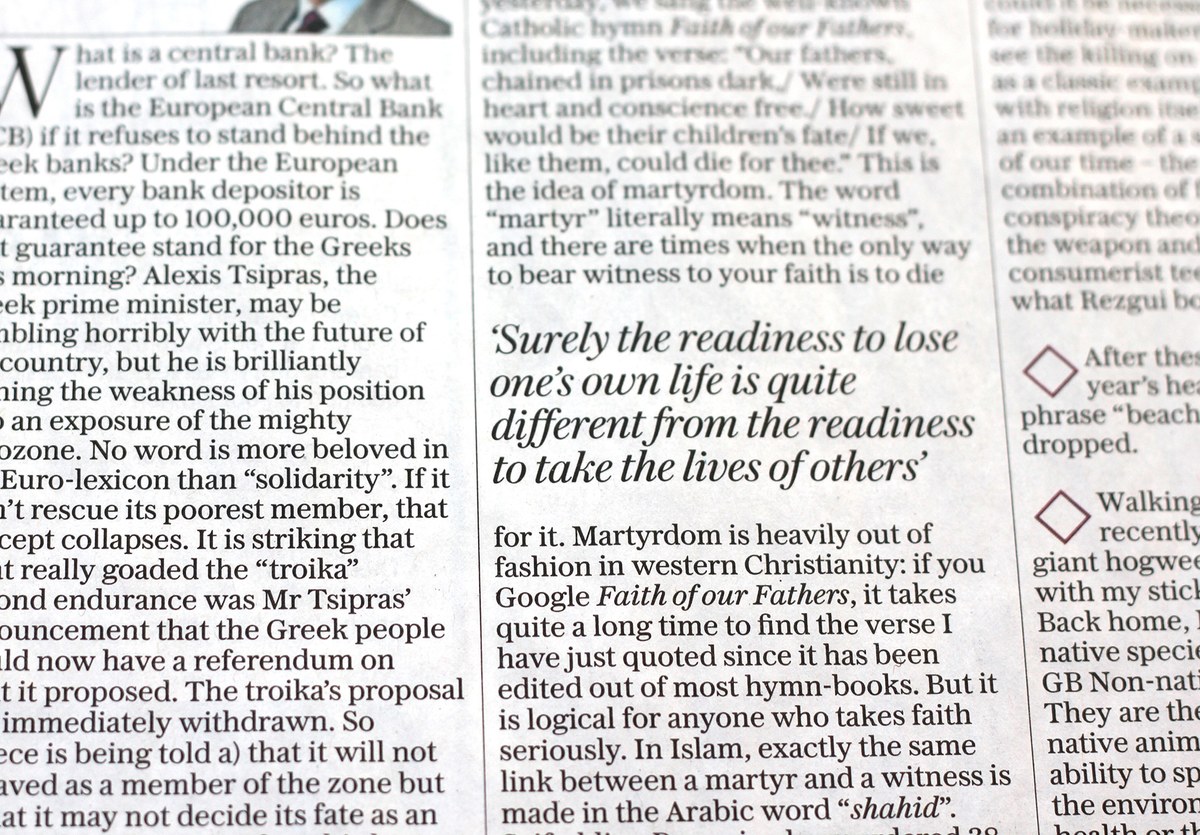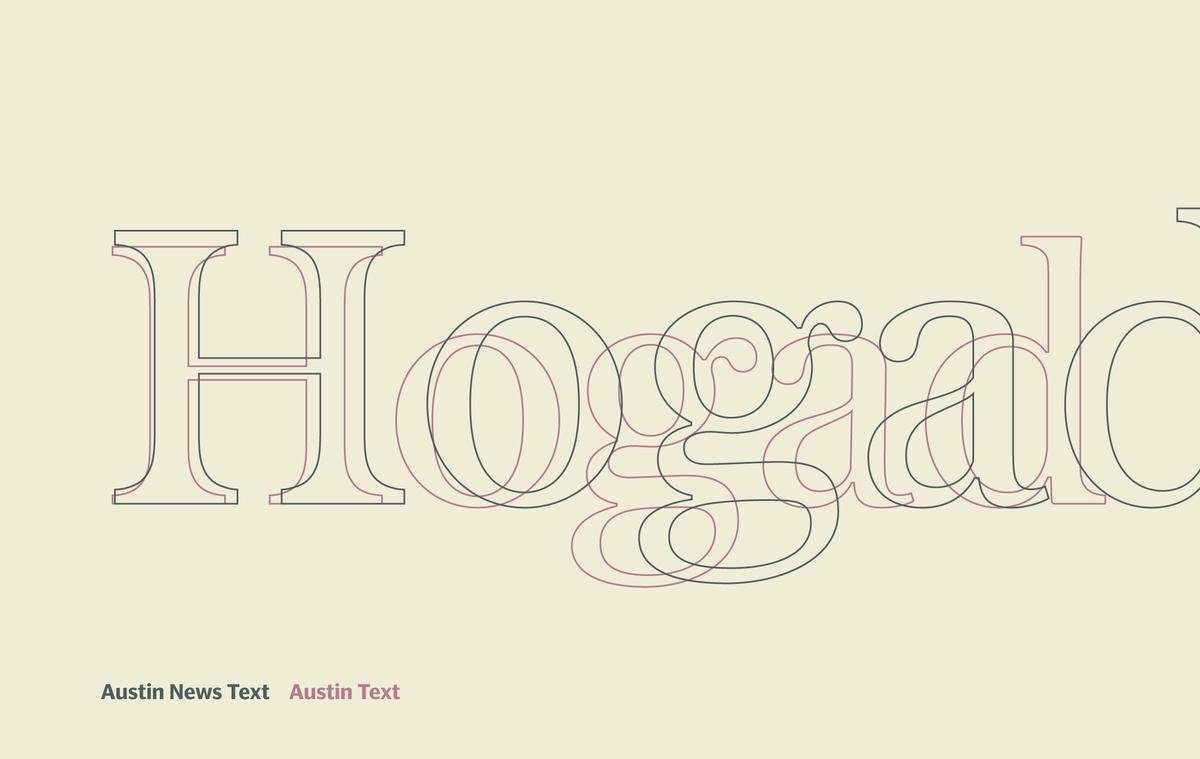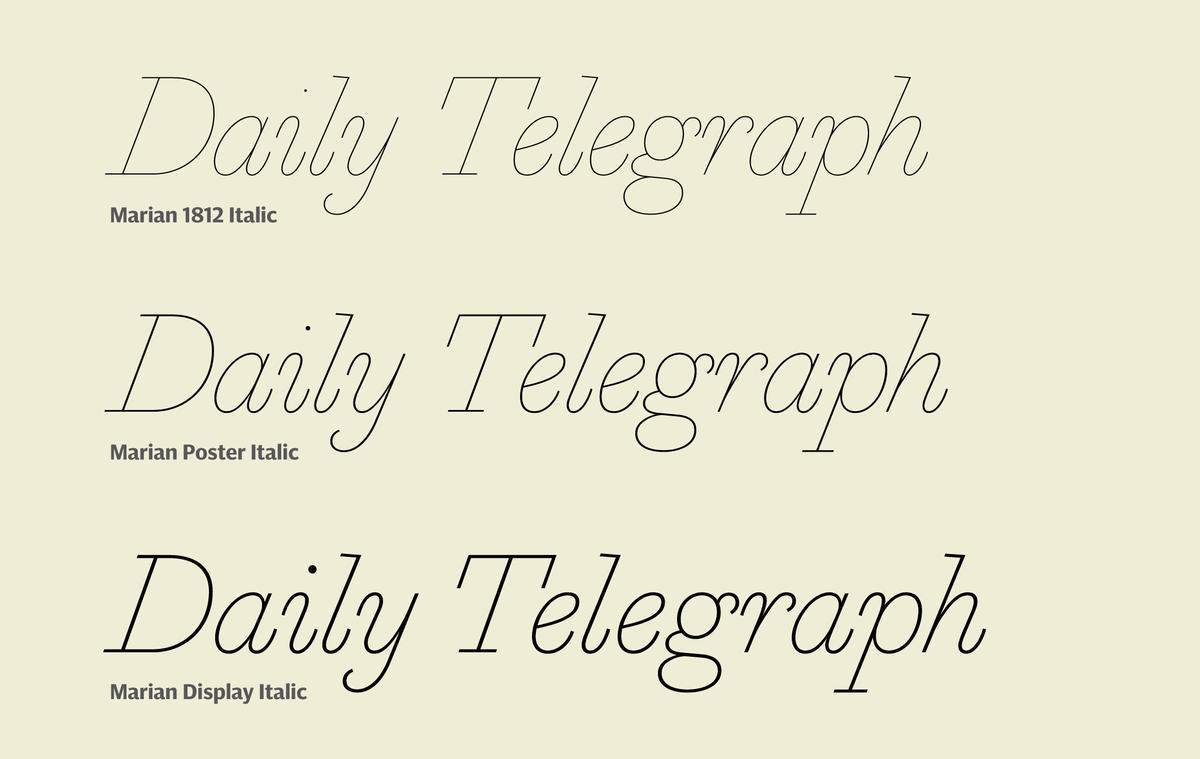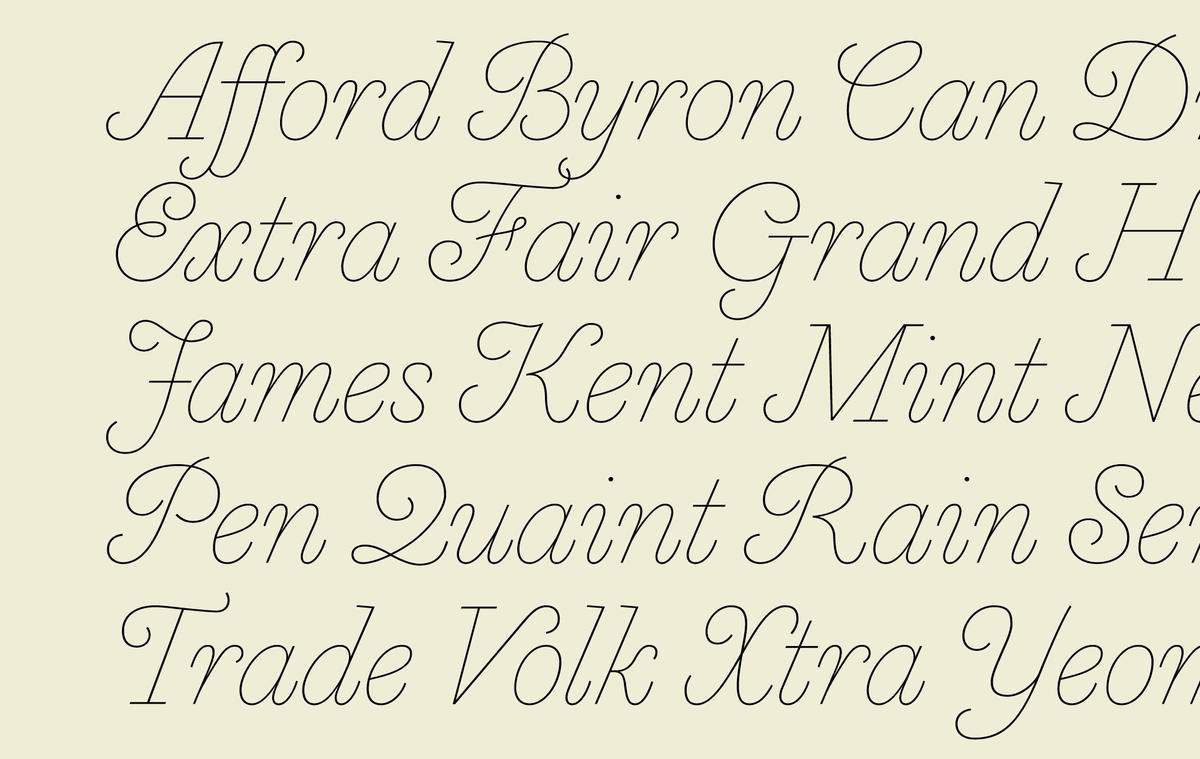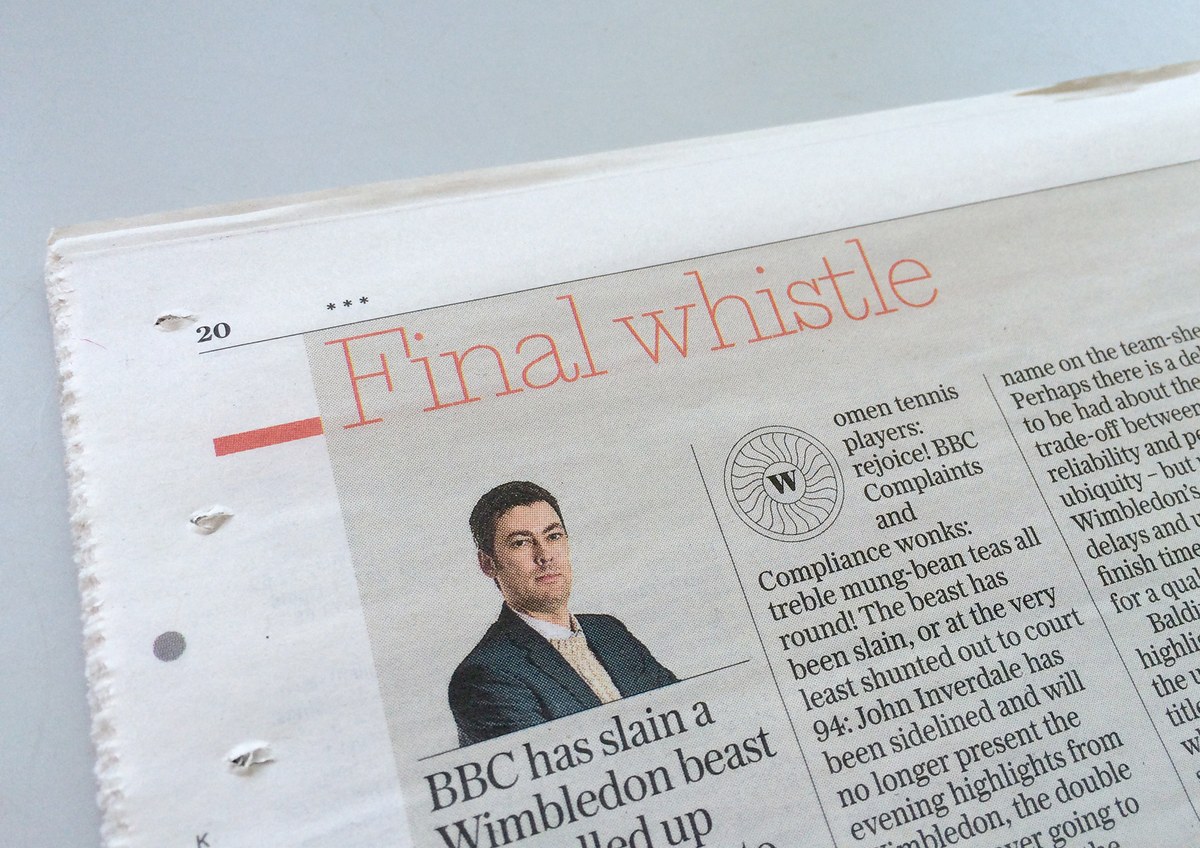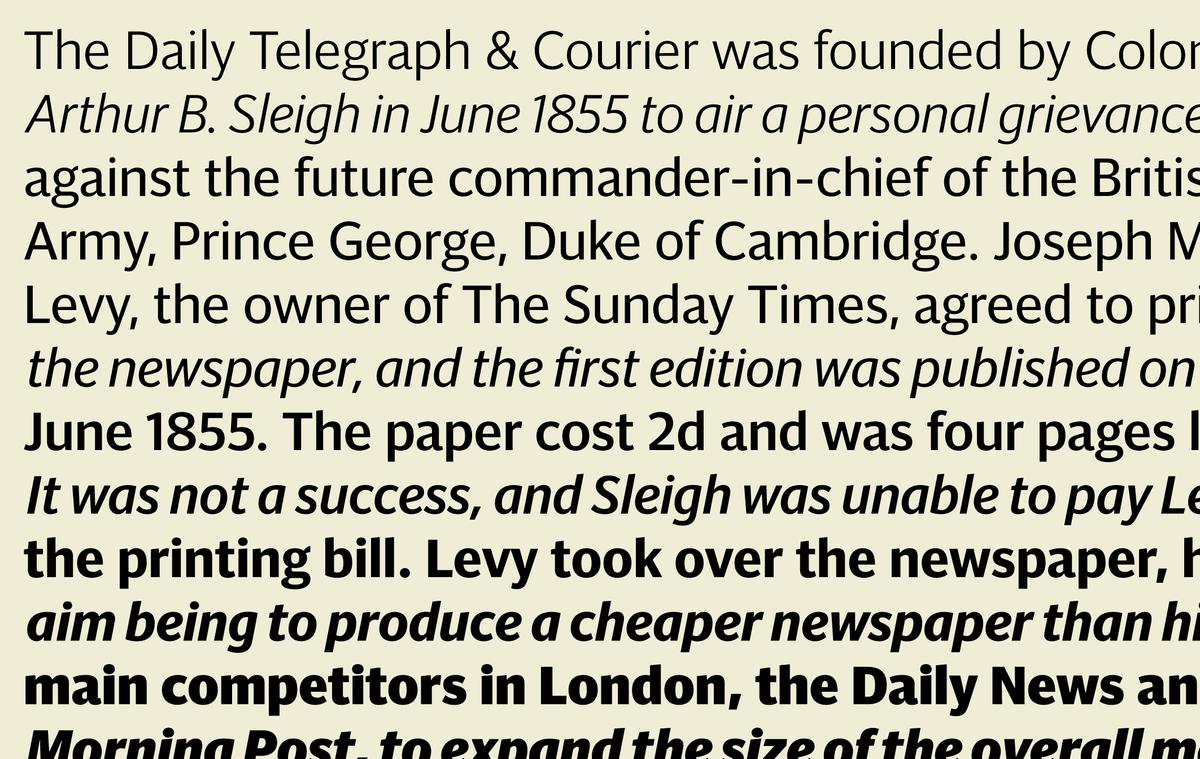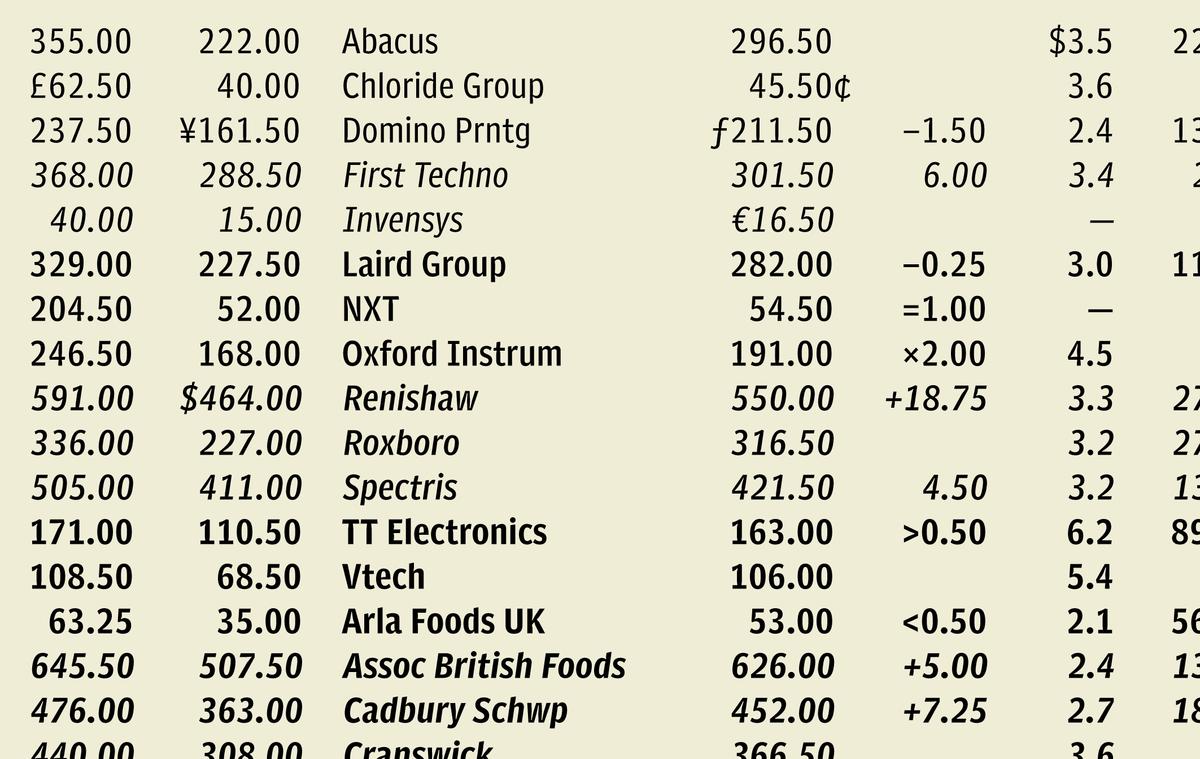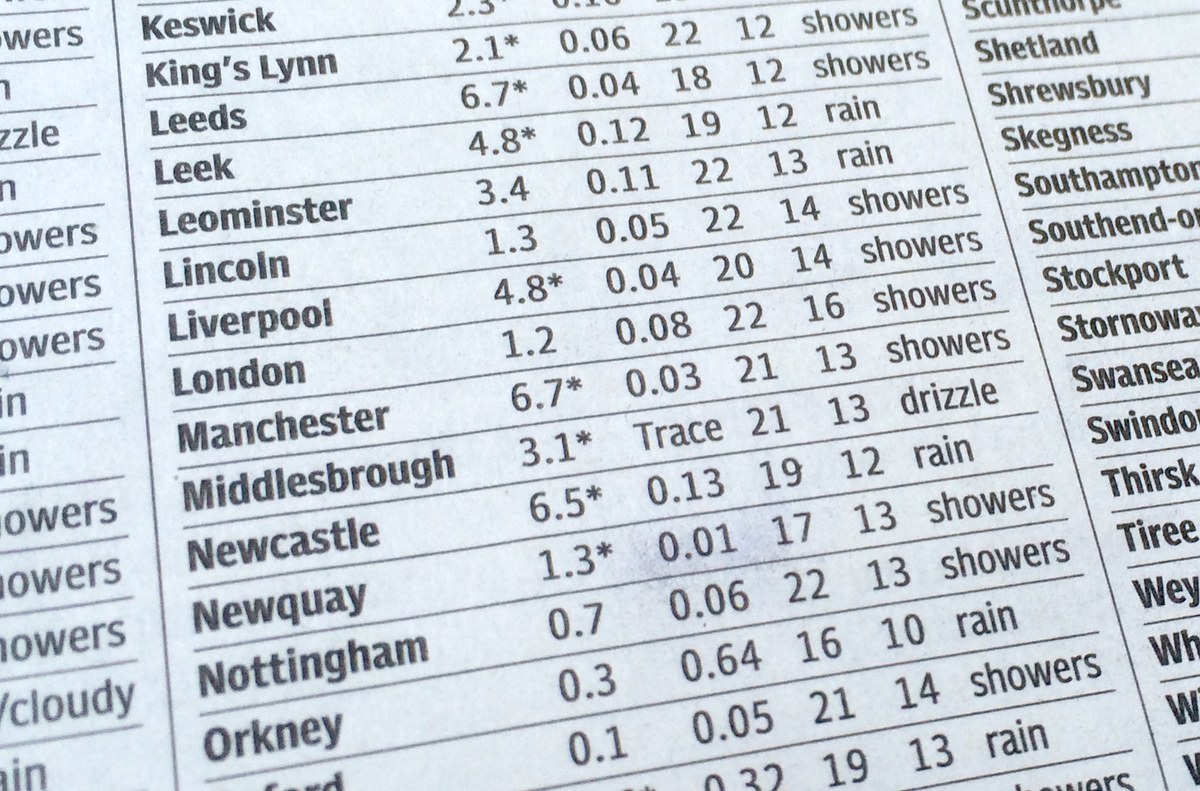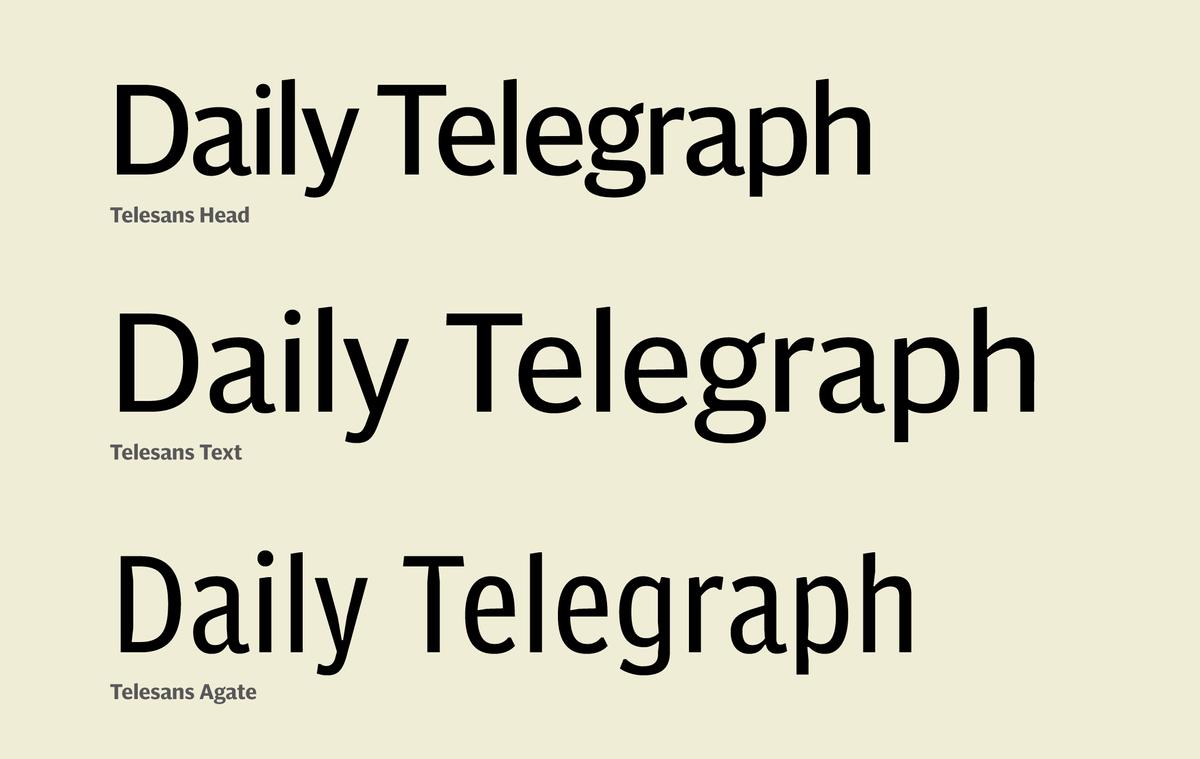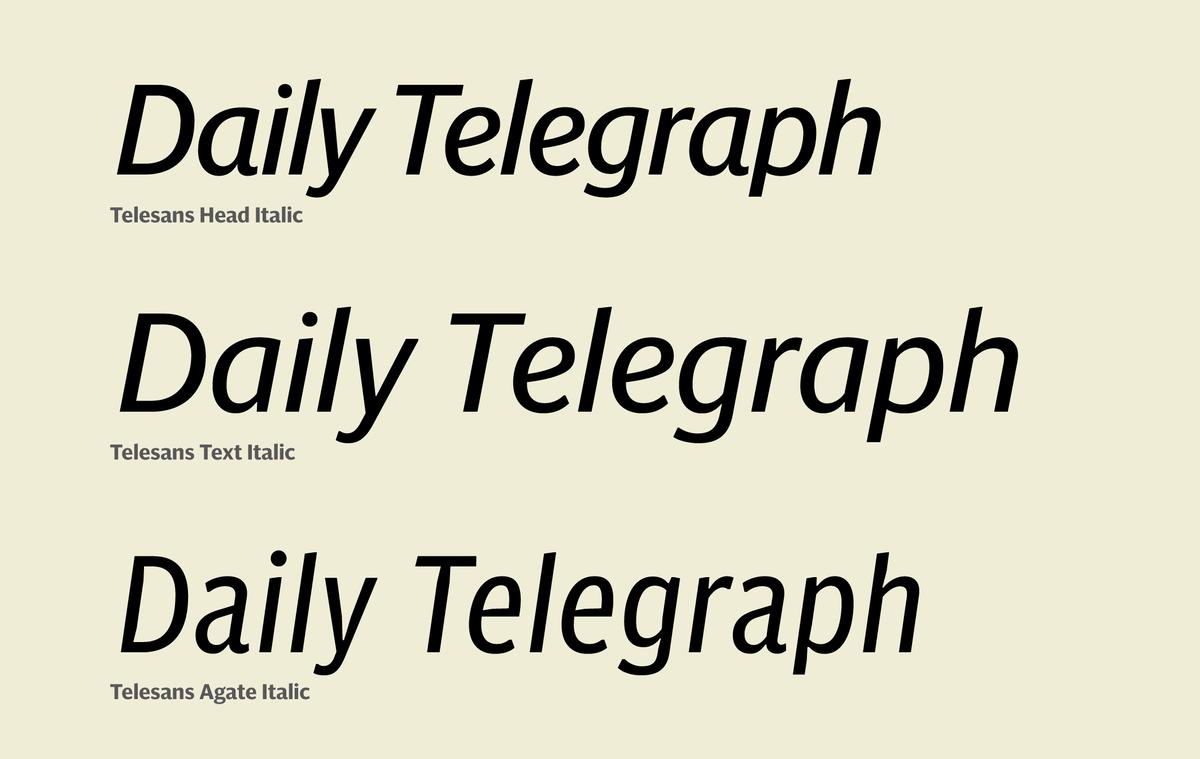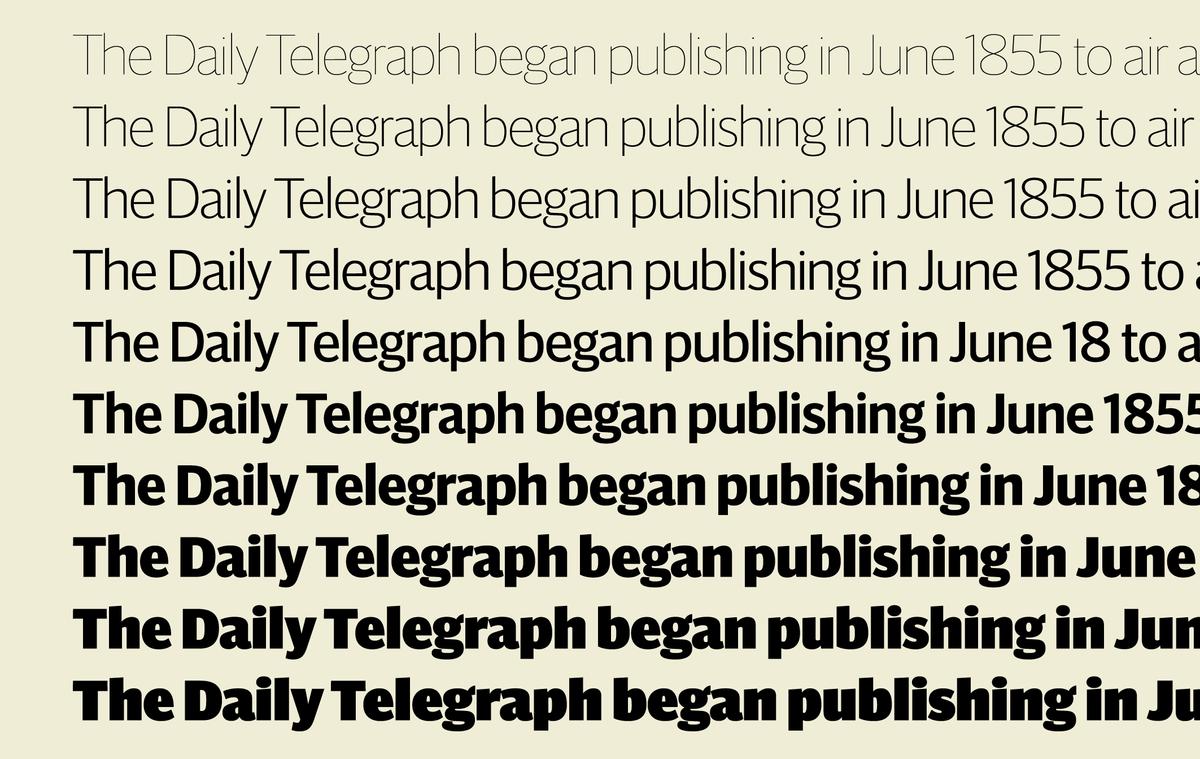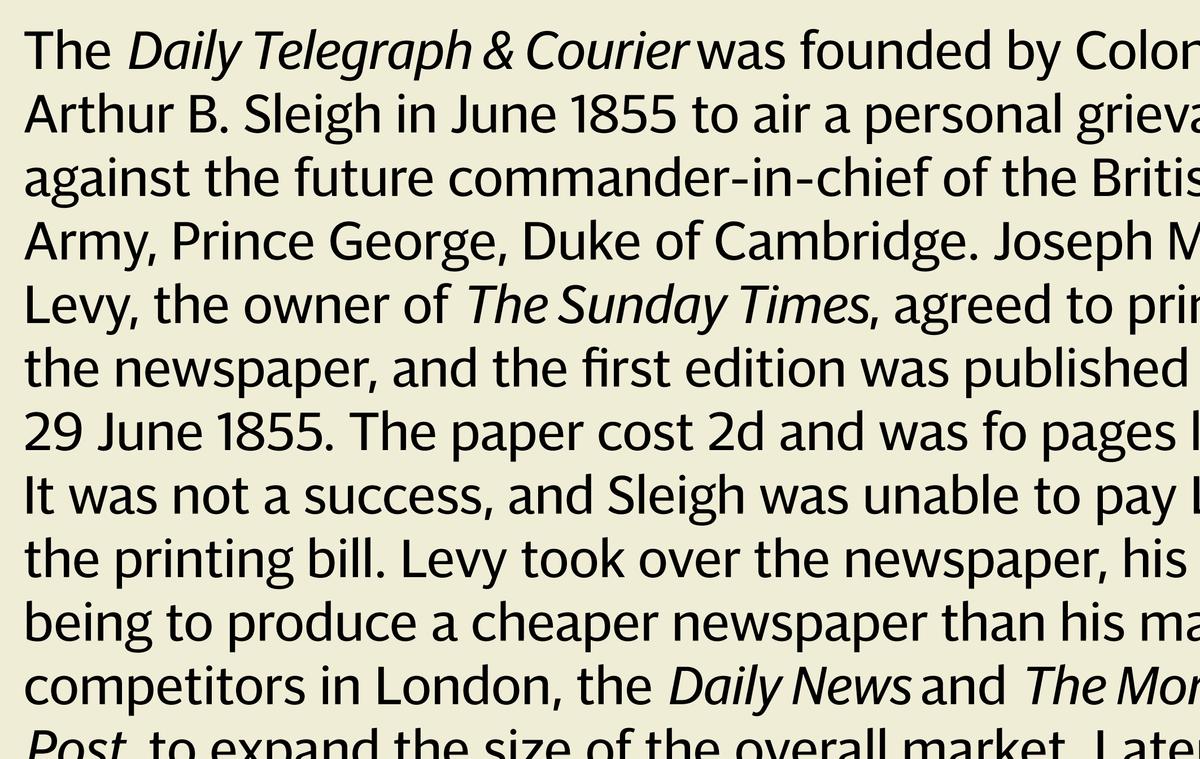New typefaces for The Daily Telegraph
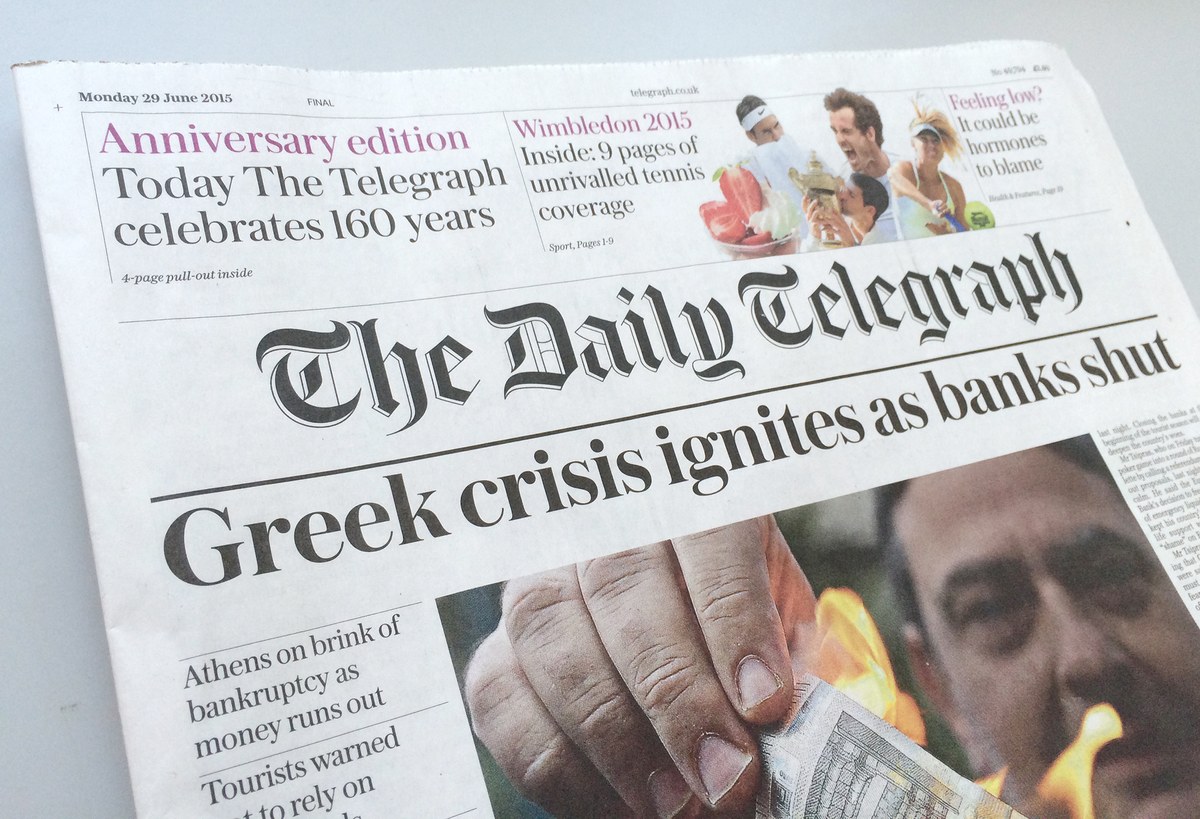
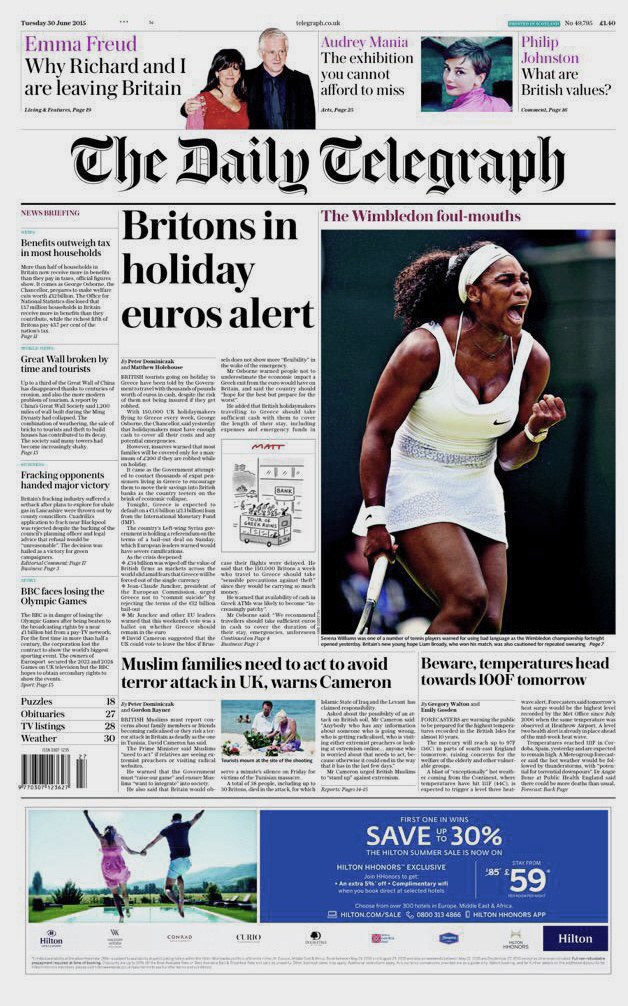
The Daily Telegraph has undergone a design transformation to mark its 160th anniversary. Under the guidance of design director, Jon Hill, one of the last remaining quality daily broadsheets in the UK has a completely new typographic dress from Commercial Type. Working closely with Hill was Commercial Type partner, Paul Barnes, who has developed two new type families as well as designing the new titlepiece.
The title piece draws on the paper’s rich heritage of using an inline blackletter form, harking back to the first publication of the Daily Telegraph back in 1865. Since this date the newspaper has seen a wide variety of forms, ranging from Victorian exuberance to the stripped down form inline less form of the most recent incarnation. Barnes looked back at the black letters of Hendrik van der Keere from the 16th century, through to the Georgian forms of the British foundries of the 18th and 19th century. The first example of the Anglo inline style seems to have been pioneered by the Fry foundry in the 1790s. The new design manages to capture historical accuracy, without seeming archaic, with high contrast giving it a dignified stature at large sizes. Three variants have been drawn, with the inline removed and lower contrast for the smallest size model.
The headline serif typeface is a new version of the popular Austin, designed originally by Barnes with later additions of a light and Ultra by Berton Hasebe. Austin News Headline retains much of the elegance and compactness of the original, with a lower contrast, an increased x-height of 106% and an overall slight widening of the face. The serifs are heavier and shorter. While Austin started as a magazine headline, inspired by the typefaces of Richard Austin, Austin News is a hardworking newspaper headline typeface, with eight weights with matching italics. The wide range of weights have been applied throughout the newspaper from the light being used for section heads, through to the bolder weights in the sports section. Designed to work above in large sizes, a version for small size headlines, Austin News Deck was designed for uses from 24 to 14pt.
As Austin Text showed, the design is robust enough to work in small sizes, and after months of trials this has lead to the new Telegraph text typeface, Austin News Text. Following much of the conventional wisdom of news text design, Austin News Text manages to keep the beauty of the display and text variants. With an increased size on body with the typical x-height increase, it is still remarkably economic, and with the decision to increase type size on the previous Franklin Antiqua, makes the paper a much easier to read. Austin News Text comes in five weights with small capitals and various alternate numeral styles.
Hill has also employed a new version of Marian 1812, the design based on the original ‘Scotch’ Romans of Miller and Wilson. Commercial Type designed additional optical weights for the font, so it can be used down to text sizes and also in large section heads, particularly in the Saturday editions. Barnes also drew an extended set of swash capitals, inspired by the copperplate initials of the Scottish foundries. It is often thought that these typefaces were cut originally by Austin, the most famous of the British trade engravers of the Georgian era, fittingly giving the Telegraph a homogenous feel.
The new design also features the Telesans family, designed by Barnes with long term Commercial Type collaborator Dan Milne. Begun in 2011 under the guidance of Himesh Patel, the former creative director of The Daily Telegraph and Derek Bishton, special creative projects director, it comes in three optical sizes, headline, text and agate. An open and warm modern humanist sans, it is at present used as a secondary counterpoint to News Austin, and for the large amount of small size typography throughout the newspaper from weather, financial listings, sports scores, and television listings.
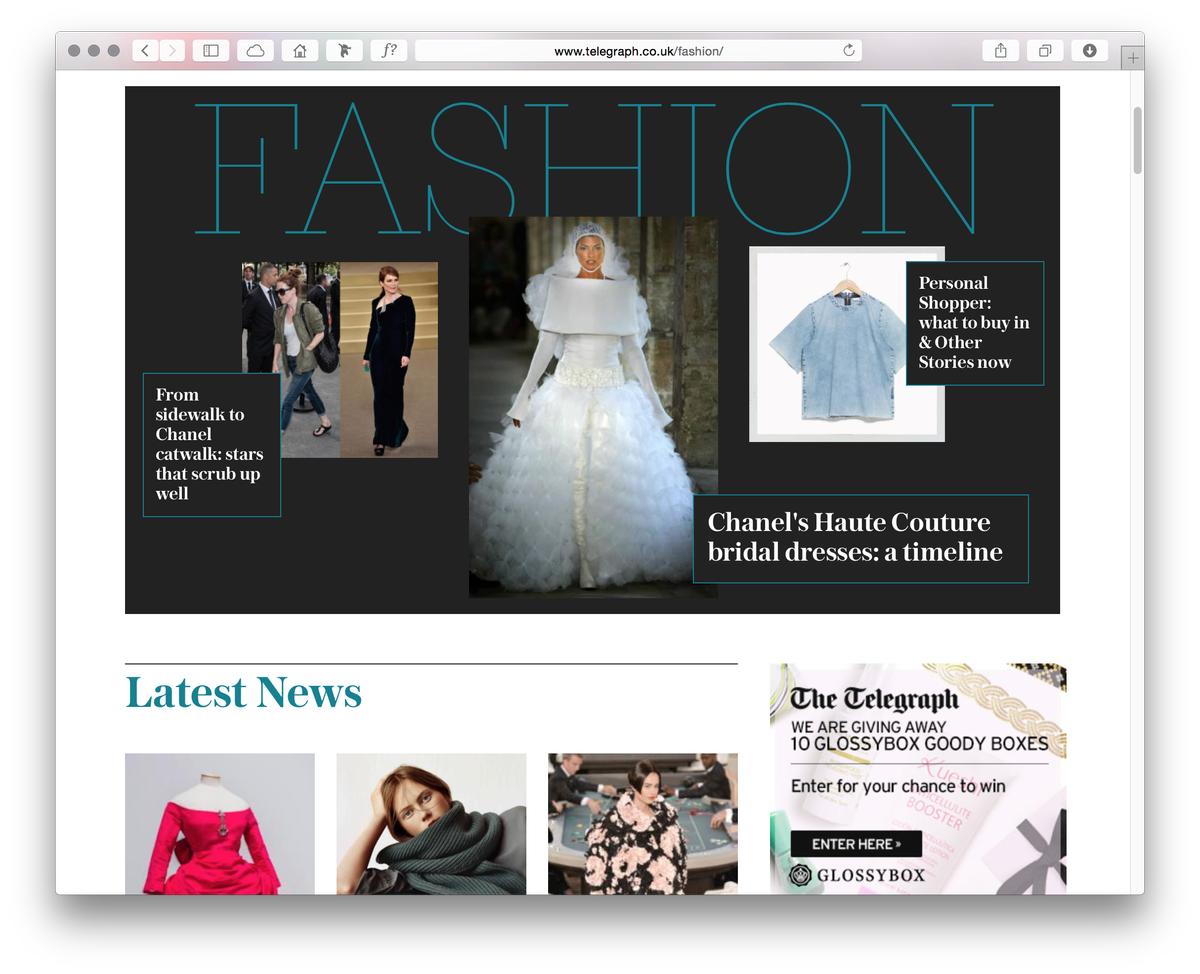
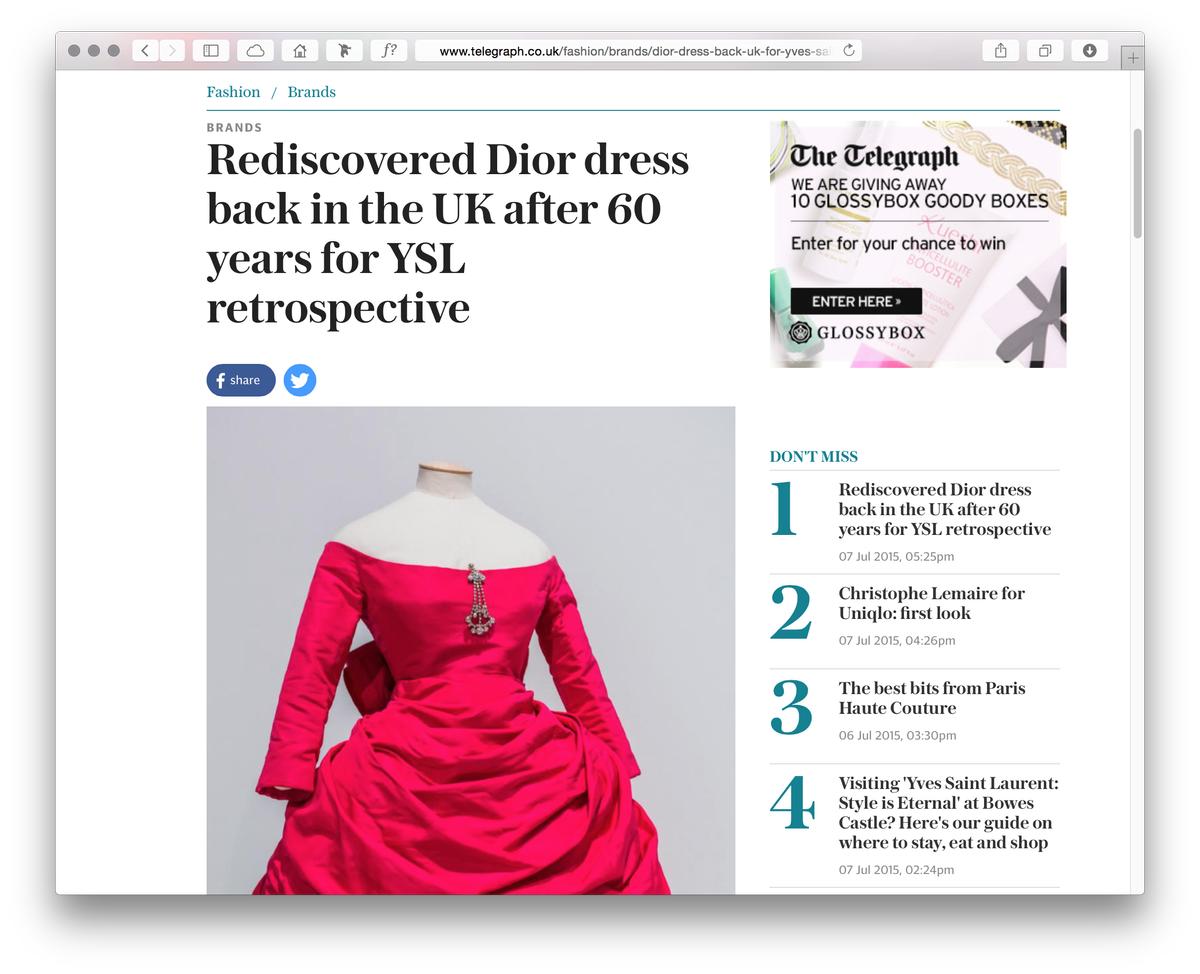
At present the typefaces are being mainly employed in the daily and Sunday editions of the print newspapers, and in a special online Fashion publication, but will eventually be rolled out across the digital editions.
